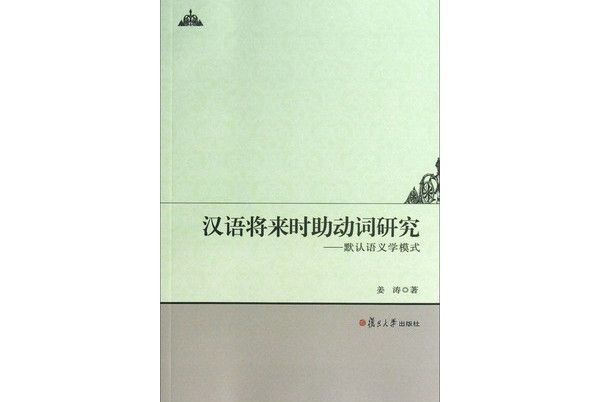《漢語將來時助動詞研究:默認語義學模式》是2013年5月復旦大學出版社出版的圖書,作者是姜濤。
基本介紹
- 中文名:漢語將來時助動詞研究:默認語義學模式
- 作者:姜濤
- 出版社:復旦大學出版社
- 出版時間:2013年5月
- 頁數:260 頁
- 定價:25 元
- 開本:32 開
- 裝幀:平裝
- ISBN:9787309095951
內容簡介,圖書目錄,
內容簡介
《漢語將來時助動詞研究:默認語義學模式》旨在用新興的默認語義學模式對漢語將來時助動詞的語義—語用意義進行解釋。實現該研究目的的基礎與前提是對漢語將來時助動詞範疇有一個全面的認識,其中包括:術語、詞類、特徵、發展軌跡和關於意義的以往研究,從中可以確定研究對象——將、要、會,同時也突顯出意義解釋目前存在的問題,即意義解釋的片面性、缺少理論模式和缺少將漢語將來時助動詞範疇作為一個整體所進行的意義分析。
圖書目錄
Chapter One Introduction
1.1 Research Objective
1.2 Research Background
1.3 Research Questions
1.4 Research Methodology
1.5 Organizational Structure
Chapter Two Literature Review
2.1 Identification of Chinese Future Auxiliaries
2.1.1 The defining of Chinese auxiliaries
2.1.2 The defining of future tense
2.1.3 Ways of expressing future tense
2.2 Studies on the Meaning Interpretation of Chinese Future Auxiliaries
2.2.1 The polysemous view
2.2.2 The monosemous view
2.3 Problems of Previous Interpretations of Chinese Future Auxiliaries
2.3.1 One-sided interpretations
2.3.2 Lack of a holistic analysis
2.3.3 Lack of a theoretical model
2.4 Summary
Chapter Three The Default Semantic Model as an Analytic Framework
3.1 The Classical Gricean Theory of Conversational Implicature and Its Defects
3.1.1 Natural meaning and non-natural meaning
3.1.2 Grice' s analysis of content of communication
3.1.3 Defects of the classical Gricean theory
3.2 An Introduction to the Default Semantic Model
3.2.1 What is default meaning?
3.2.2 What is inferential meaning?
3.2.3 Post-Gricean models of meaning
3.2.4 Advantages of Jaszczolt's Model of Default Semantics
3.3 Interpretation of English Future Auxiliaries within the Default Semantic Mode
3.4 Reinterpretation of Modality
3.4.1 Classification of modality
3.4.2 Modality vs. intentionality
3.4.3 Degrees of modality
3.4.4 Continuity of modality
3.5 Summary
Chapter Four The Semantics-Pragmatics of Chinese Future Auxiliaries
4.1 Analysis of JIANG
4.1.1 Meaning interpretation issues in JIANG
4.1.2 Modality of JIANG
4.1.3 Default semantic analysis of JIANG
4.2 Analysis of YAO
4.2.1 Meaning interpretation issues in YAO
4.2.2 Modality of YAO
4.2.3 Default semantic analysis of YAO
4.2.4 Meaning interpretation issues in YAO for future time reference
4.2.5 Default semantic analysis of YAO for future time reference
4.3 Analysis of HUI
4.3.1 Meaning interpretation issues in HUI
4.3.2 Modality of HUI
4.3.3 Default semantic analysis of HUI
4.4 Summary
Chapter Five Meaning Relations Among Chinese Future Auxiliaries
5.1 Modal Meaning Relations
5.2 Future Meaning Relations
5.3 Co-occurrences of JIANG, YAO and HUI
5.3.1 Auxiliary co-occurrence
5.3.2 Rules of auxiliary co-occurrence
5.3.3 Rules of co-occurrence of Chinese future auxiliaries
5.3.4 Default semantic analysis of co-occurrence meanings
5.4 Summary
Chapter Six Conclusion
6.1 Main Findings of This Study
6.2 Significance of This Study
6.3 Limitations and Future Research Directions
Bibliography

